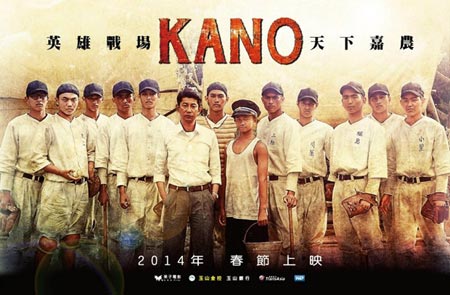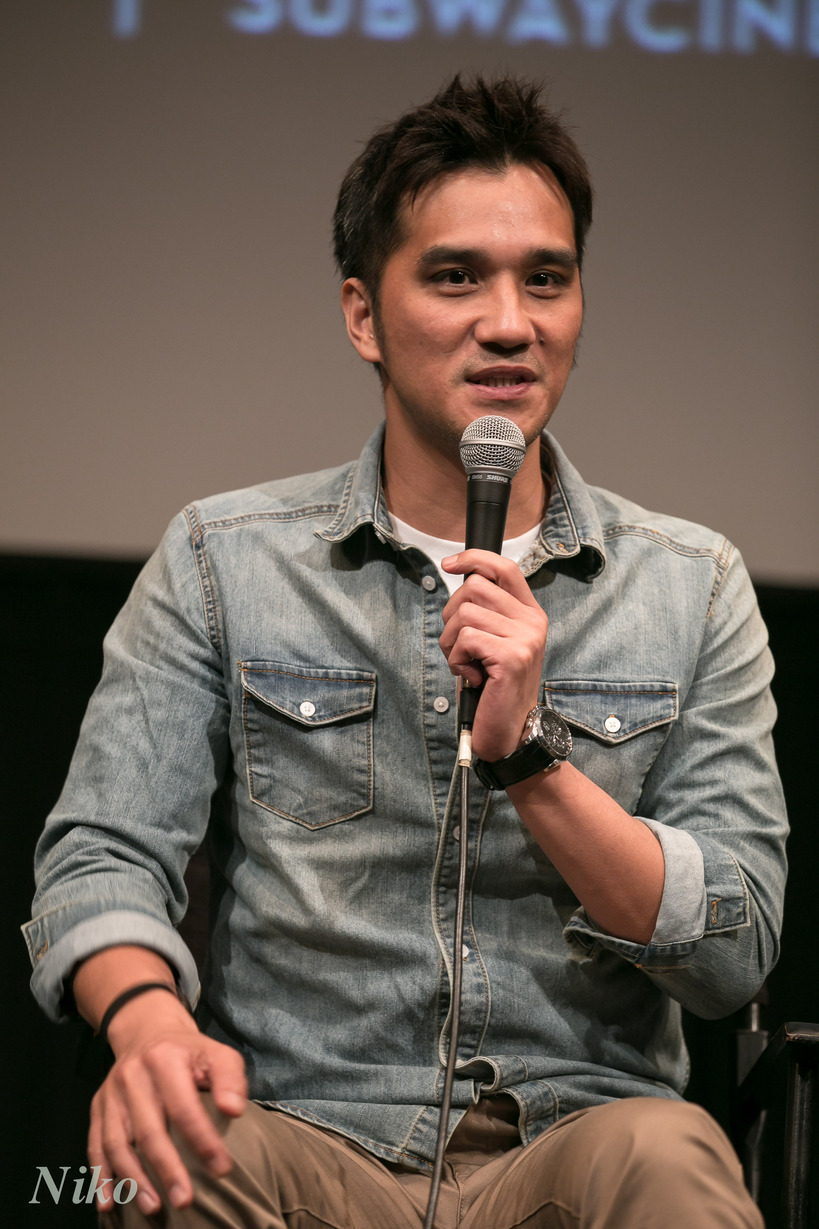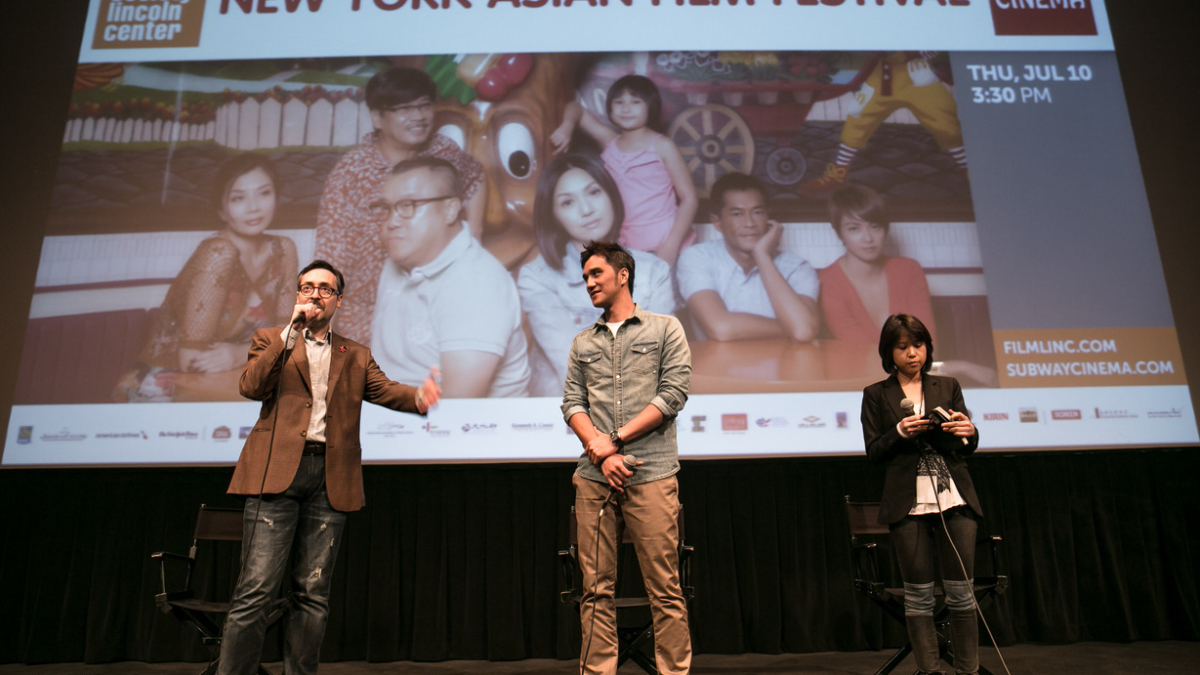CineVue interviewed Director Umin Boya on his feature film directorial debut film “Kano,” a film about the true story of Kagi Agriculture and Forestry Public School’s Japanese-Taiwanese baseball team in the 1930s. The team goes from a losing streak to eventually playing in Japan’s prestigious high-school baseball tournament finals with the help of their Japanese coach. “Kano” had its North American premiere on Sunday June 29 as the centerpiece presentation for the 13th New York Asian Film Festival.


(English translation)
Cinevue: The original script of KANO was co-written by director Wei Te-sheng and scriptwriter Chen Jia-wei. How did you join the team as director of the film?
Umin Boya: It was actually pretty coincidental. I was touring with Director Wei for SEEDIGQ BALE (2011), which I acted in. I think it was while doing a photo shoot, we were chatting about his next endeavor. He told me it would be a smaller project about baseball. I was very interested in it, because I was actually a baseball player myself. I referred myself to take part in the project by which I meant to be an actor, but Wei at that time was planning to appoint me as the director. Then, the film became our mutual collaboration. I later realized through the process of pre-production, shooting and releasing the film that it’s not a “small project” at all.
Cinevue: KANO is your directorial feature debut. In this project, you have collaborated with many talents who have worked in the Taiwanese film industry for decades, including Director Wei (executive producer), Zhiming Huang (executive producer), Chin Ting-chang (cinematographer), Tu Du-Chih (sound designer and composer). How did you team up with them? You have had numerous experiences in acting and directing TV series and shorts. Did you encounter any difficulty as your role shifted from actor to director? How was the transition from directing shorts to directing a feature?
Umin Boya: I’ve known my crew for a long time. The difference is that I’ve known them as an actor, and now I’m a director working on the film with them. And that wasn’t difficult. From my perspective, they helped me so much in terms of turning my vision into actual work. I’m extremely grateful that they’ve selflessly devoted themselves to making this film. There are crew members that just treat their responsibility as a 9-to-5 job, but they’ve made tremendous efforts in completing this film with me. It’s not just my work; it’s our work. In terms of transition, of course it was a bumpy ride at first, because this was my first time directing a feature length film. Fortunately, I got all the support and help from my crew. I felt the most difficult part was that I had to give up my persistence in the creative process when it conflicted with some practical factors and limitations. However, looking back now, I have improved a lot because of that experience.
Cinevue: The core of the film is definitely baseball, but it also has a grand historical narrative of Japanese-occupied Taiwan. Did you consult any sports epic films as reference when developing the script? Or was it more of original screenplay based on literature reading and research?
Umin Boya: I didn’t refer to any specific film. It’s mainly based on historical research and my own preferences and life experience. The essence of writing is often about preferences and of course it’s developed according to oral history and literature.
Cinevue: Baseball is known as the most popular sport in Taiwan. Many Taiwanese are familiar with all the teams, star players and history. However, the story of KANO had remained relatively unknown to the public before the film came out. While doing the research, what was the most essential part or element that you thought was necessary to include in the film? Were there any findings that altered or changed the story as seen in the final work?
Umin Boya: The script had never changed much. As it was handed to me, I added elements based on my own life experience. You can of course follow the map of a script and fully dive in when adapting it to a film, but it’s essential to have your own stand and interpretation. While doing research on the original script, I discovered many fascinating details in Taiwanese history, which I would have all loved to include. The process of developing the script is actually very much a self-searching journey. You get to know yourself better while contemplating over your own history and culture. The thing I invest myself most deeply in is the team spirit, which I spent plenty of length capturing in the film. I’m fascinated by the affection and bond between these individuals. It’s the affection among the players, among the coach and his team, and among every individual and their friends and family. I also have a strong feeling for the hierarchy, bias and discrimination among different ethnic and racial groups. Bias and discrimination often result in unfamiliarity and misunderstanding. People tend to be frightened by things they have no knowledge of. They refuse to open their mind and learn about the unknown. What I want to portray in the film is the possibilities and scenarios if people are willing to learn and embrace their differences. The focus of the story is baseball, but in an era where class hierarchy is rooted and confined in almost every social norm, I cannot ignore it and its impact. I hope to provide a perspective that through mutual understanding, it’s possible to overcome the barrier. The characterization of the Japanese journalist represents the transition from one end to another.
Cinevue: The film has double plot lines, the story of the baseball team KANO and the construction process of Kanan Canal as a historical backdrop. Was that the initial framework in the script? What is the correlation between them?
Umin Boya: I think this framework provides a fertile ground for me to build up the narrative. Kagi Agricultural is an agricultural school. These kids had their classes in the field and helped their family tilling their land after school. They always stood in the field barefoot under the sunlight. How about baseball? It’s similar. The team always practiced in the baseball field rain or shine. The reclamation and cultivation of Kanan Plain is an allegory of the story of KANO. The plain was a wasteland before Kanan Canal was built. Yoichi Hatta had spent ten years building the canal and greatly improved the situation. Despite the political scheme of the colonizer, the construction of the canal indeed brings positive impacts to the region. The arable land and annual harvest of Kanan Plain had increased ten times more, because of the canal. And that is how the historical backdrop relates to KANO. They both begin with a humble start and prosper through tremendous hardship. The land, the agricultural development and the local people all serve as foils shaping the image of KANO. “Go to Koshien and make the Taiwanese framers proud” Yoichi Hatta said to the team. In the end of the film, Hirano said to Akira that “Senpai, we are KANO from Taiwan.” I believe that people who were born and raised in Taiwan must share that deep connection between the land and lives nourished by the harvest.
Cinevue: The harmony and cooperation between different racial and ethnic groups is the enduring theme throughout the film. How do you interpret that through the film and also the “papaya story”?
Umin Boya: There are many different ways or perspectives to interpret and represent the fifty years of Japan occupying or ruling Taiwan. It is a historical complex. It’s a mixture of negative and positive feelings. However, there were indeed some positive impacts. In the objective perspective, I especially wanted to portray the breakthrough of ethnic barriers in the KANO team. The kids all teamed up and fought for honor and victory. Even when knowing that they had no chance in winning the game, they were still doing their best until the last minute. Even though they lost the game, the crowed still cheered for them. They lost the game, but they became better than their former selves. In the final game of 1931 Koshien, the players of KANO left the field with no regret but only pride. As for the papaya story, Mr. Hamada just wanted to build up some confidence in Hirano and Akira with the folk tale, but it’s a true story. The plant can actually sense if it’s going to decay, so it’ll do whatever it takes to blossom in order to foster their offspring. Mr. Hamada inspired the kids with the story and Hirano used it to encourage Kondoh (the coach).
Cinevue: How was the casting process? You casted first-time actors for the KANO team, while for the role of Hyotaro Kondoh and other Japanese characters, you casted Masatoshi Nagase and other A-list actors and actresses. How did you convince them to come on board?
Umin Boya: For the acting part, I can help them through training. However, it’s impossible to train them to play baseball like professional players in months. And the baseball scenes are crucial in the film, so their performance has to be very persuasive. They have to convince the audience that they are real baseball players. That’s the criteria. I visited all the baseball teams in high schools and colleges all over Taiwan. We also accepted online applications. We chose twenty candidates and after a session of training, we selected the cast from the finalists. They are all professional players. As for the role of Hyotaro Kondoh, we always wanted to cast Masatoshi Nagase since the very beginning. His look, charisma and acting style all fits with the role perfectly. It took a long time and a great deal of communication to have him on board. It’s amazing to have him in the film. His interpretation and performance added so much depth and layers to the character. For all the other cast, Takao Osawa, Maki Sakai and Togo Igawa, I have to express my greatest gratitude to them. I have learned so much from them while we shot the film together. I could not have completed this film without them.
Main images: Poster for “Kano.” Image photo credit of Want China Times. Photos of Umin Boya credit to Asian in NY blog.
Questions formulated by Miranda Hsiu-an Wan and Lesley Yiping Qin.
Interview conducted by Miranda Hsiu-an Wan and Lesley Yiping Qin.
Transcribed and translated by Miranda Hsiu-an Wan.

